Natural ventilation in the bathroom, as a rule, leaves much to be desired. At the same time for this room is characterized by high humidity, which can lead to mold. In order to avoid this, it is recommended to install a fan for the hood in the bathroom. These products are of various types and differ in a number of characteristics, however, they are mounted quite simply and allow you to maintain a comfortable atmosphere in the room.
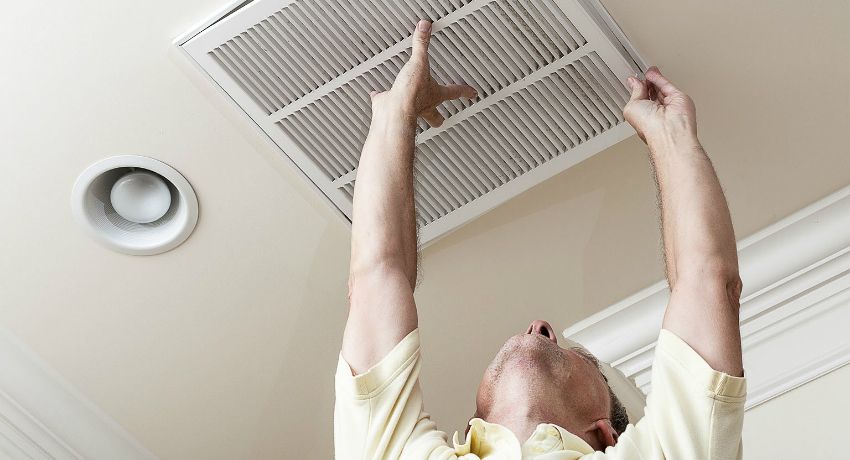
When do you need a fan
If the air circulation in the bathroom is well carried out, the installation of the fan is not needed. Exhaust fans for the bathroom are needed in the following cases:
- the house is located in a hot climate – at high air temperatures, natural air exchange is minimized, so the installation of a domestic exhaust fan is simply necessary;

- hermetic windows and doors – the absence of drafts in the house in this case is a minus, since the air does not enter the house through plastic double-glazed windows, therefore, humid air accumulates in the bathroom;
- clogged ventilation – ventilation ducts in many old houses are hopelessly clogged with dirt and dust, and without the help of a fan for the bathroom the air will not be drawn through them. It also leads to the formation of mold in the premises and the multiplication of pathogens;
- high humidity in the bathroom due to the design of the house – if the apartment is located on the first floor and the basement is flooded regularly, or if you live on the top floor and the attic over you is constantly flowing, then the apartment will always have an increased level of moisture. In this case, you simply cannot do without an exhaust device.
If at least one of the factors described above is relevant to you, this means that you need to install a device in the bathroom for forced air circulation.

The main advantage of the device is that its installation will allow you to significantly reduce the level of humidity in the bathroom or toilet. In addition, it is relatively inexpensive, easy to assemble, even without the presence of specialized skills and tools, does not require special care. The disadvantages are the following:
- noise during operation of the device – this problem can be easily solved if you purchase a silent fan for the bathroom;
- a fairly large power consumption during continuous operation – this problem is also solved if you monitor the operation of the device and do not keep it on all the time. A good solution would also be to purchase a model with a timer that allows you to set the fan off time;
- the installed fan covers the entire air duct, and when the device is turned off the natural air flow does not occur – in order to solve this problem, it is recommended to install a double ventilation grill.
Helpful advice! Buy a fan for exhaust in the bath or not – you decide. In any case, if the installed device does not meet your requirements, it can be easily dismantled.
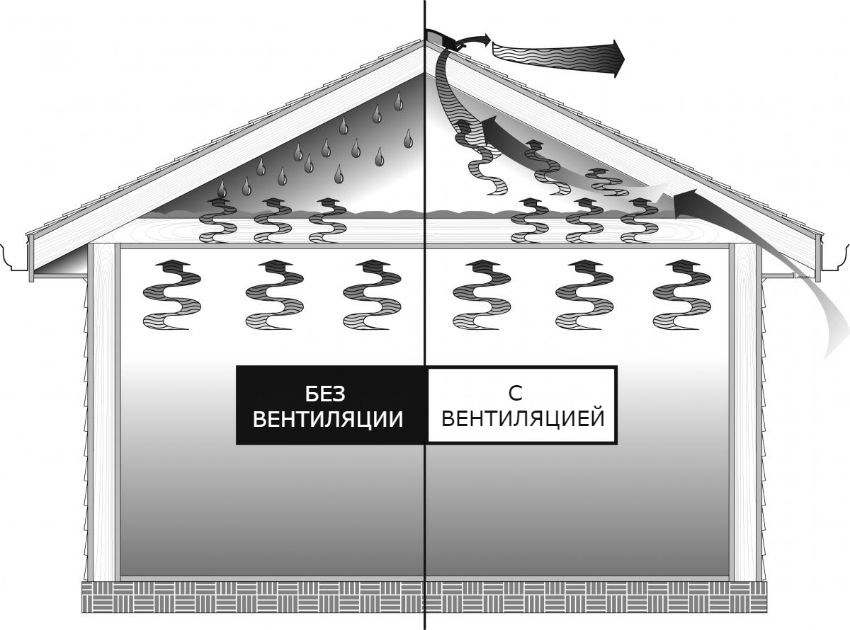
When buying a duct exhaust fan or another model, you need to pay attention to the following device parameters.
Performance – this parameter means how much air can move the fan over a set period of time. To calculate this parameter for your bathroom, you need to multiply its volume by the rate of air exchange. The last parameter is constant and depends on the number of people using the room. So, if they are from 1 to 3, then the multiplicity is 6, more than 3 – 8.
Noise level – this parameter should not exceed 35-40 dB. Installing a silent fan for the bathroom with a check valve will help reduce the noise level to a minimum. In addition, this problem can be solved by finishing the ventilation passage with materials with a high level of sound insulation.
Safety device – household axial fans and other models are subject to short circuit with increased moisture content in the air. Therefore, it is better to give preference to devices that are reliably protected from splashes and are not afraid of water. The recommended security class for bathrooms is IP44.
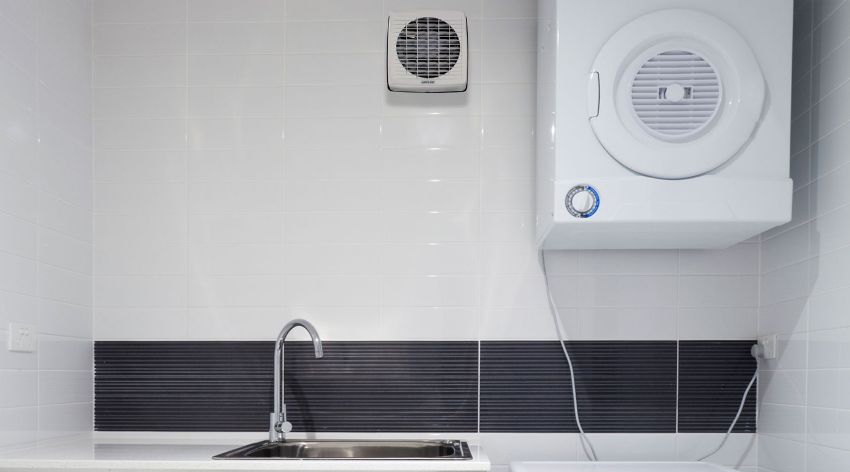
The size – Before you buy a device, take measurements of the ventilation hole. It should be borne in mind that the device must not only freely enter the ventilation channel, but also its external part must completely cover the ventilation hole.
Appearance – This option is selected solely depending on your sense of taste and bathroom design. In the modern market there is a huge number of models, so choose the most suitable for your interior will not be difficult.
Functionality – the presence of various additional functions. Here you should not get too carried away and choose the most functional device. Choose only those functions that really come in handy, as they affect the price of an exhaust fan.
Among the useful additional features of the device for forced air extraction are the following:
- power control is one of the most useful functions, as it allows to significantly reduce power consumption. Adjustment can be carried out in automatic or manual mode;
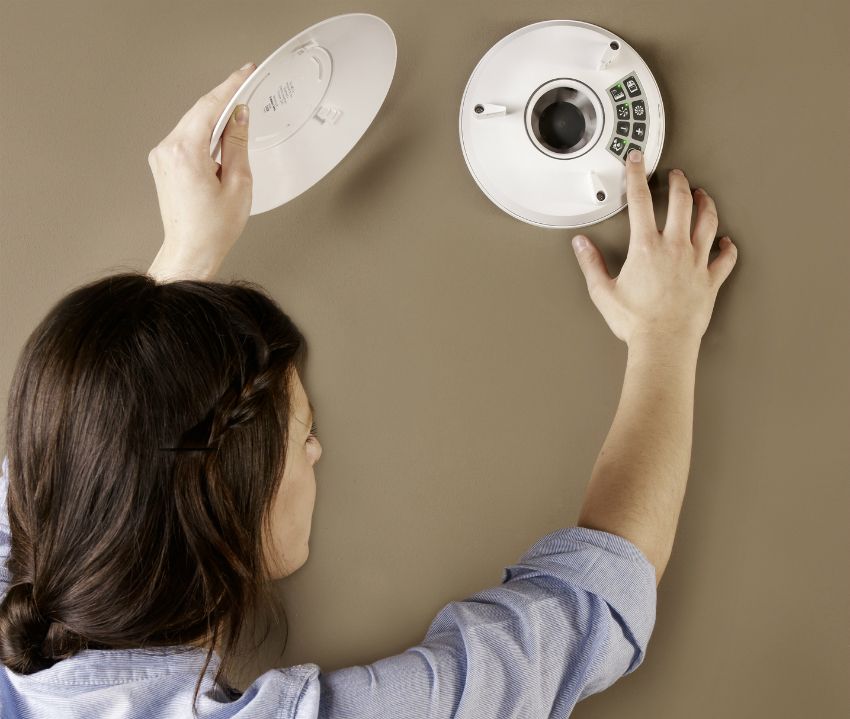
- The humidity sensor is another useful feature, the presence of which means that the device will turn on only when the humidity level in the room reaches a certain level. Bathroom fans with a humidity sensor also help save energy;
- Motion sensor – the fan turns on when someone enters or leaves the bathroom. The device in this case continues to work for a specified time;
- timer – exhaust fans with a timer are good because you can independently set the device operation time;
- the function “constant airing” – the device always works at minimum speed and increases power if the humidity in the room rises. This mode is good if you dry in the bathroom after washing things;
- check valve – if the vent from your bathroom goes directly to the street, then an exhaust fan for the bathroom and toilet with a check valve will not allow unpleasant smells to enter the room from the street.
Helpful advice! It is not recommended to make the fan turn on fully automatic. It is better to set the device to turn off automatically, and make its launch controlled.
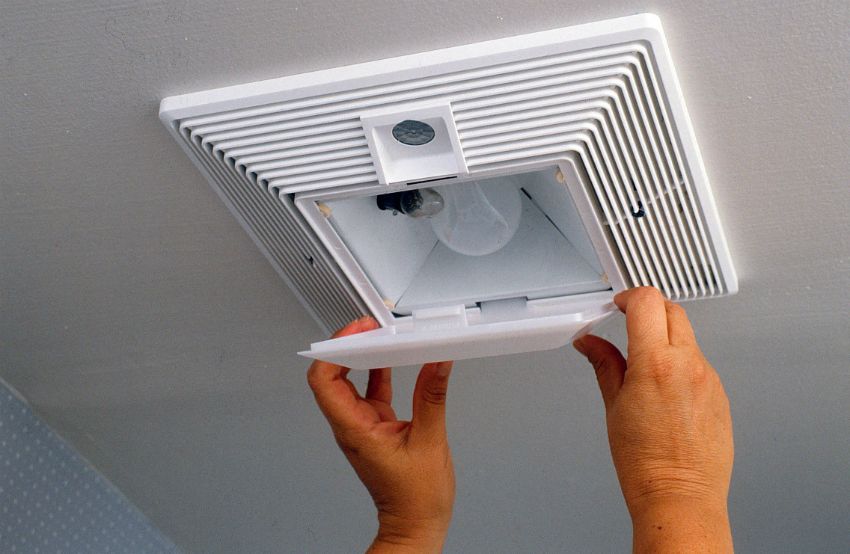
For the toilet the fan is much easier to choose than for the bathroom. As a rule, in this room you only need to get rid of unpleasant odors, so you can install the simplest model, which will turn on and off simultaneously with the light in the toilet. For the toilet, a model with a check valve will be very relevant, and the recommended capacity is 50 m / h, provided that the ventilation is functioning normally.
Bathroom fans can vary in a number of characteristics. The first is the type of mounting device:
- Surface mounted or wall mounted – mounted directly on the wall. It should be understood that such a model will noticeably stand out against the background of the wall, therefore it is better to install it in a secluded place hidden from view.
- Built-in – is installed directly into the wall. Such a model can be almost invisible, while it is much better protected from the harmful effects of moisture and dust than the invoice mounting option of the fan.
- Ceiling – also built into the vent, but not on the wall, but on the ceiling. It is good that it can be organically entered into the interior design of any room, but rather quickly becomes clogged with dust, therefore it needs regular cleaning.

Also, fans are distinguished by design features.
Axial – a feature of the axial reversing or direct type fan is that it is made in the form of a blade impeller, which is located in a cylindrical body. In this case, the fan blades are at a small angle to the channel axis, and the air drawn in by the device moves along the axis.
In the catalog of axial fans you can find many different models, but they are all low-power, so they do not cope well with high humidity in large rooms. Another disadvantage of this option is increased noise during operation, which can reach 50 dB. Mounted such a model can directly into the vent. Price axial exhaust fan is slightly lower than other models.
Radial – in such a fan, the working part has the shape of a barrel, to which the blades are attached at the same distance from each other. When working, the blades of the model move the air to the inner surface of the device. In this case, the blades can be bent forward or backward, and in the latter case, this allows the fan to draw in air not from one side, but from two sides. This makes it possible to save energy and more effectively get rid of moisture.
Radial fans have compact dimensions and low noise levels during operation.
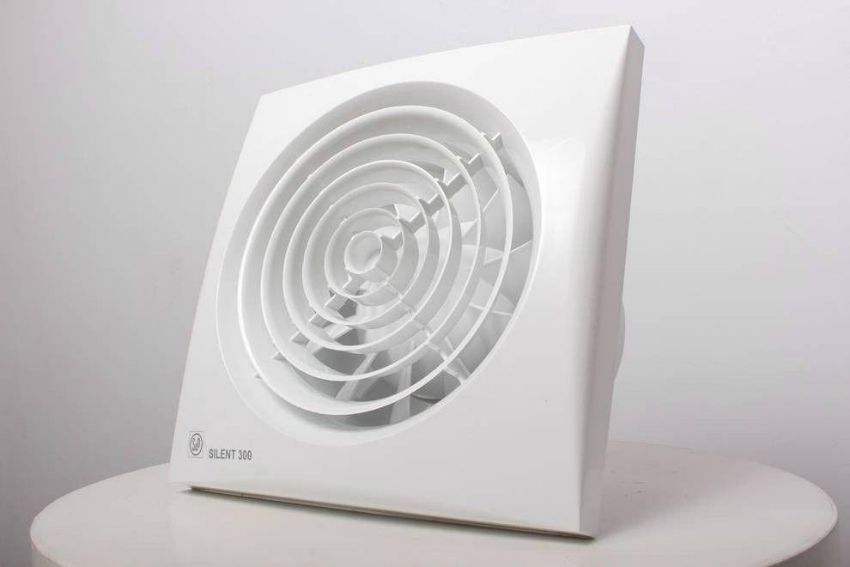
Duct or centrifugal – one of the newest, but the most popular models. Channel fans can now be bought at any specialized store, and they can be effectively used on an area of over 15 m ?. The advantages of the channel centrifugal fan include high power, low noise, compact dimensions and an attractive design.
They are available in various sizes, and the choice of model depends on the parameters of your duct. For example, 125 mm duct fans are mounted in ventilation with a small diameter, but 160 mm duct fans are designed for installation in large air ducts. The disadvantages include the rather high price of channel fans. To mount such a model is somewhat more difficult than others, since for this it is necessary to completely isolate the device from the walls of the vent. It is recommended to use a layer of corrugated rubber.
Helpful advice! Regardless of the diameter of the duct fan (150 mm or more), when installing, be sure to place all the wires in a special case.

If you decide to buy an axial exhaust fan or any other model, then you can install it on your own without much difficulty. But before you begin the installation, you need to perform several steps.
First, you need to check how well your ventilation functions. To do this, bring a lit match or a piece of paper to the ventilation grille. If the flame leans towards the duct, it means that it is working normally, and if the flame remains stationary, then the ventilation shaft must be cleaned before installing the device.
Secondly, there must be a gap of about 2 cm under the door to the bathroom or toilet. This is done so that when installing a domestic axial exhaust fan or another model, fresh air flows into the room instead of the appliance pulling out of the room . Otherwise, ventilation will not function.
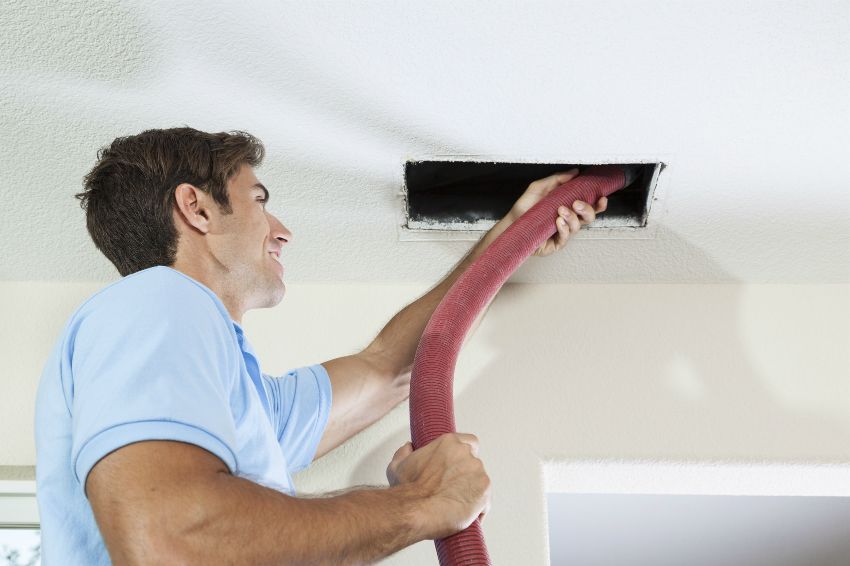
Sometimes it happens that the vent does not fit in the size of the selected fan model. In this case, it can be done less or vice versa, to expand with a hammer and chisel. In the first case, conventional mounting foam is used.
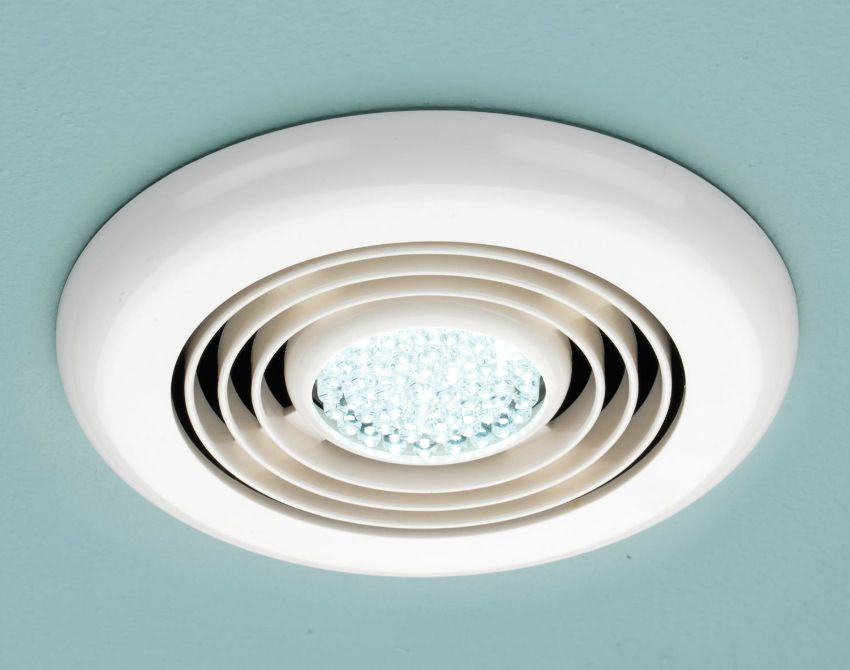
Exhaust fan for the bathroom is a compact and relatively inexpensive device that will help you get rid of excess damp in the bathroom, provide air circulation and help solve the problem of high humidity. Its installation and connection to the power grid will not take much time, and this can be done without special skills and tools. Also, such a device will be effective for the toilet, balcony, pantry and many other rooms in which there is a problem of poor natural air circulation.

